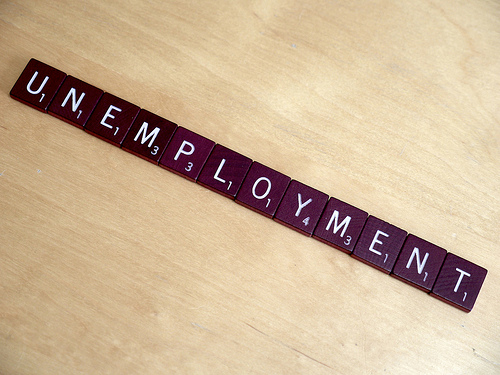As we prepare for the retail launch of the holiday season, here’s a question worth tackling: Does Black Friday (or Gray Thursday) matter? If you’re the kind of shopper that delights in the adrenaline rush of shopping in the wee hours of the Friday after Thanksgiving, go for it. For the rest of us, it may be better to just enjoy a long weekend. Although you are likely to be barraged by offers, according to the New York Times, “the chances of snatching a great deal for a quality item are slim, largely because Black Friday is mainly designed for retailers to clear out unwanted goods, and because best-selling products rarely drop much in price.” Those warnings are unlikely to deter the throngs--Black Friday is still expected to be the Number One shopping day of the year, despite a drop off in sales estimates over the past two years.
Overall, Americans are expected to increase holiday spending, which includes all of November and December, by 3 to 3.5 percent from a year ago, according to the research firm eMarketer. Warning: don’t pay too much attention to the estimate from the National Retail Federation (NRF), which calls for a 3.6 percent increase in holiday spending in 2016. The NRF’s projections tend to overestimate sales growth because of its shaky methodology, which relies on asking consumers how much they spent last year, and how much they plan on spending this year.
With the election settled and wage growth strengthening, there could be an upside surprise to retail results this holiday season. Regardless of whether sales increase by more or less than expected, the focus will return to the growth of digital. In a report last week, the government said that overall e-commerce jumped 15.7 percent in the third quarter from a year ago, while total retail sales increased 2.2 percent in the same period. Still, most shopping still occurs in physical stores. Last quarter, E-commerce accounted for just 8.4 percent of overall retail sales.
But these numbers are somewhat misleading, because overall retail sales include the big-ticket automobile category, as well as gas and groceries. According to consultancy Strategy&, these groups are responsible for almost half of total retail sales. Without them, online’s penetration of its “addressable market” is closer to 16 percent.
The subset of digital commerce that continues to power sales is mobile. According to Adobe Digital research, in 2016, “mobile will overtake desktop for the first time in terms of driving visits to a website during the holiday season.” But consumers are using their phones more to research than to make purchases.
If you do plan to get busy this week, here are few things to keep in mind:
- Make a list of products you want to buy and start tracking their prices on Google and Amazon and then on PriceGrabber or PriceJumpon savings.com.
- The hottest gifts this season are expected to be VR devices (Oculus, PlayStation VR and HTC Vive), Pokémon, Barbie, Lego, Hot Wheels and Frozen toys, as well as Google Home and Amazon Echo.
- When you log on is important. The Monday before Thanksgiving is good for electronics; if apparel is on your list, the biggest discounts will be highest on Tuesday; and the majority of Walmart’s Black Friday deals, are available to online shoppers starting at 12:01 a.m. on Thursday. Thanksgiving Day is the best day for jewelry purchases.
- Black Friday deals: Cheap electronics, video games, DVDs, and gaming systems. And while it may not exactly be on Santa’s list, Friday may also be a good day to close a deal on a new car, as dealers seek to clear out inventory and boost sales. Cyber Monday can be ideal for toys, which are 13 percent less expensive than they were in October, according to Adobe.
- Don’t be loyal: Despite the ability to find steep discounts, 25 percent of customers will end up paying higher prices because they are loyal to a retailer.
- Download ShopSavvy, before you hit the brick and mortar stores…the app can scan barcodes and compare at other big retailers.
- Check out CNET’s Black Friday Guide, which highlights the best deals at many of the nation’s top retailers and Consumer World’s Black Friday Week Tips for Bagging a Bargain.
- Sobering reminder: The best deals always occur AFTER the holidays.
MARKETS: The post-election selloff in the bond market continued, as investors bet that the Trump administration will boost spending, cut taxes and as a result, spark an increase in inflation. The yield on the benchmark 10-year note closed at a 12-month high and logged the biggest two-week gain in 15 years. The Treasury bond market is on pace for the biggest monthly negative return since December 2009 and the overall bond market has seen the biggest two-week rout in data going back to 1990.
- DJIA: 18,868, up 0.1% on week, up 8.3% YTD
- S&P 500: 2182, up 0.8% on week, up 6.8% YTD
- NASDAQ: 5321, up 1.6% on week, up 6.3% YTD
- Russell 2000: 1315, up 2.6% on week, up 15.8% YTD
- 10-Year Treasury yield: 2.34% (from 2.12% week ago)
- British Pound/USD: 1.2356 (from 1.2593 week ago)
- December Crude: $45.54, up 5.3% on week
- December Gold: $1,208.30, down 1.3% on week, 9-month low
- AAA Nat'l avg. for gallon of reg. gas: $2.15 (from $2.18 wk ago, $2.12 a year ago)
THE WEEK AHEAD:
Mon 11/21:
8:30 Chicago Fed National Activity Index
Tues 11/22:
10:00 Existing Home Sales
Weds 11/23:
8:30 Durable Goods Orders
10:00 New Home Sales
10:00 Consumer Sentiment
2:00 FOMC Minutes
Thursday 11/24: US MARKETS CLOSED THANKSGIVING
3pm JC Penney
4pm Old Navy (some locations only)
5pm Best Buy, Toys R-Us, Macy’s
6pm Wal-Mart, Sears, Kohl’s, Target
7pm K-Mart
Large Stores Closed:
TJ Maxx, Marshall’s, Staples, Office Depot, BJs, Costco, GameStop, Lowe’s, Nordstrom’s, Neiman Marcus, Christmas Tree Shop
Friday 11/25 BLACK FRIDAY
1:00 Stock Markets close early
![Jill on Money [ Archive]](http://images.squarespace-cdn.com/content/v1/59efbd48d7bdce7ee2a7d0c4/1510342916024-TI455WZNZ88VUH2XYCA6/JOM+Blue+and+White.png?format=1500w)








